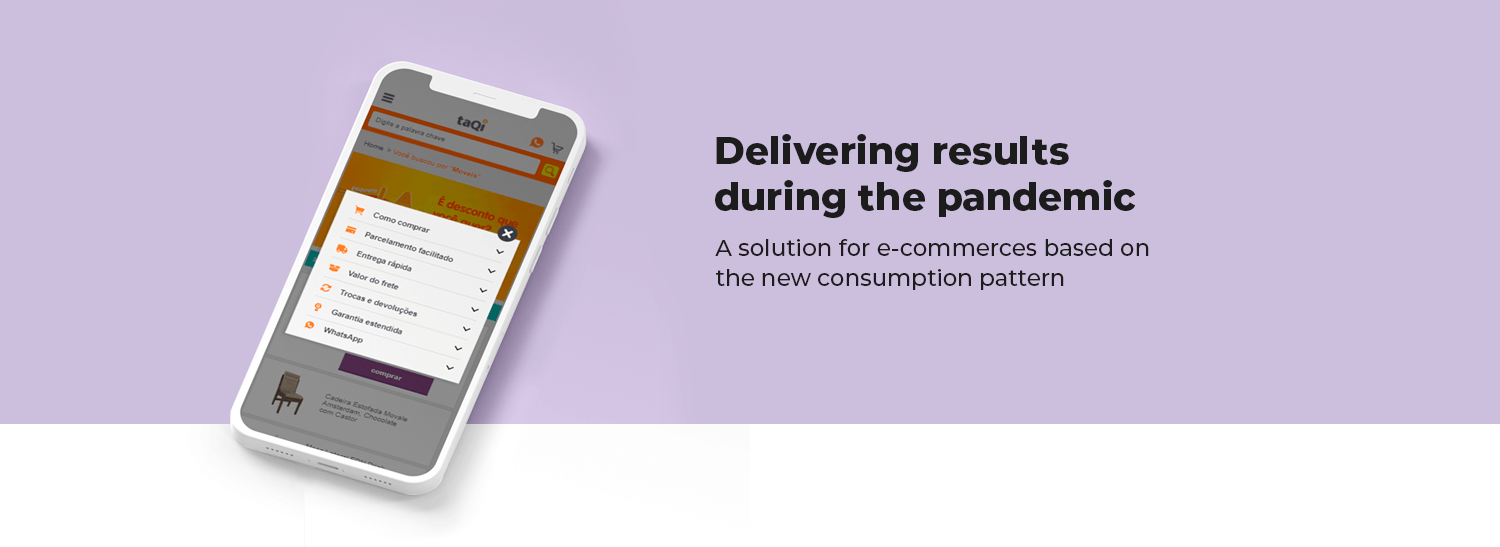

UX/UI Design
Data analysis
Year
July -2020
Karen Ferreira – UX/UI Design
Leonello Leone – Software Engineer
Matheus Rothen – UX Lead
Fernanda Pereira – Quality Assurance
Ana Magnani – CRO Business Lead
Gabriel Rosa – Metrics
Anna Oliveira – Project Services
The Context
During the pandemic, was identified an increase of new users making the first online purchase. At the same time, was identified an increase in the customer service channels, mainly because the customer didn’t feel confident to buy online.
+15%
increase in the number of consumers making their first purchase online
One of the main characteristics of this new online consumers is that they tend to have more questions and difficulties at the time of purchase, as their mental model is not used to buying online.
Hypotheses
We’ve noticed an opportunity of increasing the conversion rate based on the following hypothesis:
If we build easily available “buying guides” for the ecommerce, as well as investing in well-structured FAQs, it probably will provide more confidence to new users, optimizing the purchase experience and increase the conversion rate.
Solution
Our CRO (Conversion Rate Optimization) team created a solution called “floating help”. A customisable sidebar containing the main questions of customers. Leveraging the quick access to responses and/or contact channels.

It is located on the website’s home page and follows the user’s navigation, facilitating access to their main questions.

Impact & Results
The analyzed data refer to the first 30 days compared to the previous month (when the feature was not implemented).
The Floating Help was implemented on the site for 100% of the audience, both on desktop and mobile.
The conversion rate with the feature implemented was 5,37% whereas the conversion rate without the feature was 1,20%.
It means an incredible uplift in the conversion rate of
+348%
ENGAGEMENT WITH THE FLOATING HELP
Our team was incredibly surprised by the outcomes that confirmed our hypothesis. The item “How to Buy” was the third most clicked. It shows that creating easily available “buying guides” effectively meets the user’s needs of clarifying even the most basic questions. Hence increasing the confidence levels on and the conversion rate.

* the action of closing is the first most clicked item, which tends to be a natural behaviour to continue navigating.
Learnings
AGILE INNOVATION
Creating agility while dealing with the changing circumstances was fundamental in this project. This meant accelerating time to market, creating prototypes in their “minimum viable” state to be improved overtime, rather than waiting for the perfect product to be launched.
THINK ABOUT THE POST-CRISIS
It is likely that many customers who have had a good digital experience will continue to buy after the crisis is over. Companies that think digital and offer superior experiences have the opportunity to increase satisfaction and maintain the relationship with customers on the long term.
